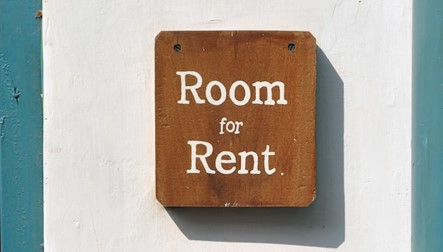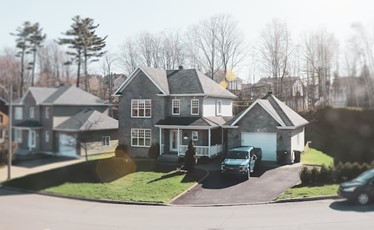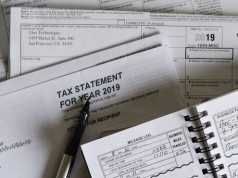Bradley Ransome is a real estate investor, entrepreneur, and veteran home flipper. In the following article, Brad Ransome discusses various real estate investment strategies, the pros and cons of each, and how investors can choose the right approach for their specific goals.
There’s no better time to invest in real estate than now.
According to data organization Real Capital Analytics, in 2021 alone, United States commercial property sales reached an astounding record of $809 billion, almost double from the previous year. With this ongoing trend, there is an abundance of real estate investing opportunities both across established and emerging sectors.
Brad Ransome explains that gone are the days when real estate investors mostly relied on investing in physical properties. The real estate landscape has changed drastically over the years, offering a multitude of strategies that investors can choose from, including being able to sell a property without actually owning it.
The choices abound, but it’s crucial for investors to determine the right strategy that aligns with their financial goals, long-term vision, and risk tolerance to maximize their investment success.
Below, Bradley Ransome provides an in-depth exploration of various real estate investment strategies and insights on how to choose the right approach for individual goals.
Bradley Ransome Explores Real Estate Investment Options
Real estate investors can choose from a wide range of options based on their specific goals. The following are the most common choices:
Commercial Real Estate Investing
This involves investors acquiring commercial properties such as office buildings, warehouses, and retail spaces. These properties offer the potential for steady rental income due to longer-term leases often signed by businesses.
Brad Ransome says that apart from the steady increase in rent over time, the value of commercial properties usually appreciate – the more businesses they attract and the more desirable the location gets, the higher property values will drive up.
Residential Real Estate Investing
This avenue typically focuses on residential properties such as single-family homes or multifamily units. Similar to commercial real estate investing, investors can benefit from steady rental income and property value appreciation.
Additionally, these investments also offer tax advantages like depreciation and mortgage interest deductions.
Land Real Estate Investing
This investment avenue involves acquiring undeveloped land for agriculture, future development, or even holding for speculative purposes. Unlike rental properties, land investment does not generate immediate income.
However, Brad Ransome explains that the value of land can appreciate significantly over time, especially when development and urbanization continues. As a result, investors get substantial returns of investment when the property is sold, typically for specific land-use purposes or to developers.
Industrial Real Estate Investing
Industrial real estate, including warehouses, distribution centers, and manufacturing facilities, offer investors with capital growth and a stable income through rent.
With the growth of e-commerce, there has been an increasing demand for these types of properties, driven by the need of logistics companies to streamline their supply chain operations.
Brad Ransome also notes that these investment options accommodate various objectives, risk profiles, and time horizons which allows investors to choose the best strategy that suits their specific goals. Whether aiming for income, capital appreciation, or a combination of both, the real estate platform offers a myriad of opportunities for investors to succeed.
Taking Action: Real Estate Investment Strategies
Buy and Hold
Buy and hold is a long-term investment strategy wherein an investor purchases a property and retains it, either short-term or long-term, depending on what they are aiming for. Investors usually intend to sell the property at a later time for higher profits, but will rent it out temporarily.
With buy and hold real estate strategy, undervalued properties as usually chosen, which will be repaired or restored, then rented out to earn income.
Pros
- This strategy provides investors with passive income from property rental payments over a long period of time.
- Investors can benefit from decreased tax liability as they can take advantage of tax deductions on repairs, mortgage interest payments, other property-related expenses.
- Because real estate properties appreciate in value over time, investors can sell the property for higher profit in the future.
Cons
- Purchasing a property requires closing costs, a down payment, and other expenses – a significant upfront investment that may pose a challenge for some investors.
- Owning rental properties can be stressful and time-consuming for some investors as it involves finding tenants, overseeing the property, collecting rent, and addressing maintenance and repair problems.
- The property value is subject to fluctuations based on the current conditions of the local economy as real estate markets are unpredictable, possibly affecting rental income and property appreciation.
 Fix-and-Flip
Fix-and-Flip
Bradley Ransome notes that though considered to be a high-risk investing strategy, the fix-and-flip approach involves acquiring an undervalued or distressed property, renovating it, and then selling it to gain profit.
Pros
- Fix-and-flip is ideal for investors who like hands-on involvement – they have total control over the design and construction processes, making decisions that can maximize the value of a property.
- This strategy can provide investors with high returns on investment in a short span of time if executed successfully.
- Those who are knowledgeable in a certain market or local area can utilize their expertise to determine distressed properties that can give them substantial returns in investment.
Cons
- The market for distressed and undervalued properties is very competitive, thus investors may need to act and decide quickly to acquire the most suitable properties.
- The whole process of fix-and-flip requires significant time commitment from choosing and purchasing the property to rehabilitating and selling it.
- The fix-and-flip strategy comes with high risk which includes market fluctuation, unforeseen delays, and unexpected renovation costs, all of which can affect profitability.
How to Successfully Flip Houses: A Quick Step-by-Step Guide
- Do Careful Research on the Housing Market: If an investor finds a property with potential, he should first learn about home prices in the neighborhood and look into bidding wars for similar properties. Look for factors that can add value to the property such as proximity to schools, parks, shopping centers, and other local amenities.
- Set a Budget Following the 70 Percent Rule: The 70 Percent Rule states that investors should not pay more than 70 percent of the property’s after-repair value, excluding repairs. The aim should be to make improvements to increase the property’s value by more than how much is spent to renovate it.
- Try to Get Financed: Mortgage lenders view house-flipping as a risky investment, therefore getting financed is not easy. However, investors can qualify for a loan more easily if they work on their credit score or do a professional home inspection.
- Get the Home Inspected: A home inspection is crucial for house-flipping as it informs the investor of all issues that need to be addressed, which may give him more leverage later on when negotiating the sales price.
- Renovate and Rehabilitate: Investors should keep in mind that they are flipping a house, not building their dream home – improvements made should be well within budget and reasonable.
- Sell the House: The easiest ways to sell a property is through a real estate agent or at an auction.
Wholesaling
Brad Ransome says that wholesaling is the business of finding a property below market price and then selling it to another investor for profit. The investor who finds and sells the property does not have to own it, and the price he will quote to the potential buyer will include the property fee and his finder’s fee.
Pros
- Wholesaling is ideal for beginners as requires no upfront capital.
- Those who try their hand at wholesaling have the potential to generate quick profits without having to own a property.
- The risks involved are minimal as investors do not own the property and there are no repairs or maintenance involved.
- Wholesaling is a great opportunity for networking – investors can connect and build relationships with other industry professionals.
Cons
- Since wholesaling is a fairly easy way to gain profit, there is strong competition in this field. Anyone who’s looking to go into wholesaling should be able to identify properties with potential and have a deep understanding of the local real estate market.
- To secure good deals, investors should have good negotiation skills and a knack for sales.
- Wholesalers need to be careful with complying with relevant state laws and regulations as wholesaling can be subject to legal restrictions.
 BRRRR
BRRRR
BRRRR stands for Buy-Remodel-Rent-Refinance-Repeat. If done the right way, it is an excellent strategy for building a rental portfolio without depleting an investor’s funds early in their investing career.
Bradley Ransome explains that this entails purchasing an undervalued or distressed asset, renovating it, renting it out, refinancing it to access equity, and then using that profit to acquire more properties. When the property is able to provide steady cash flow, the investor usually retrieves their money.
Brad Ransome states that the BRRRR Method takes some time to master as it has a learning curve. But when done correctly, it’s a great strategy to acquire homes quickly and earn passive income.
Pros
- Investors can increase a distressed property’s value and gain substantial profit by rehabilitating it.
- Rental income can be used for mortgages or other property investments.
- Real estate investors can benefit from tax deductions like mortgage interest, repairs, and property taxes.
Cons
- Brad Ransome reports that property values can fluctuate due to the unpredictability of real estate markets, affecting rental income as well as property appreciation.
- This strategy involves substantial time commitment, from renovating the property, managing it, finding tenants, and doing maintenance and repairs, among other things.
- Refinancing may require the investor to take out a new loan; there is also the risk that the value of the property does not appreciate as expected.
Real Estate Investment Trusts (REITs)
Brad Ransome says that REITs are firms that invest in income-generating real estate like shopping malls or big apartment complexes. About 90 percent of the generated monthly rental income is distributed by the REITs to their shareholders in the form of dividends.
This strategy provides a great opportunity for solo investors to invest in properties that are professionally managed, especially those who do not wish to purchase any properties.
Pros
- Investors gain access to a diversified portfolio of real estate properties, helping spread the risk.
- This strategy is a passive investment option which means that there is no need for investors to be involved in day-to-day management; the REITs come with managers to take care of tenant selection, rent collection, repairs, and maintenance.
- REITs are traded on public exchanges, meaning investors can purchase and sell shares quickly.
Cons
- Since investors do not own any of the assets, they have little to no control over investment and management decisions when it comes to the properties.
- Investors are required to pay REITs fees, which can diminish their returns.
- The value of shares is unpredictable as REITs are subject to market fluctuations.
House Hacking
Bradley Ransome reports that this real estate investment strategy involves acquiring a property, ideally a multifamily property, living in one unit, and renting out the rest to earn rental income.
House hacking is renting out your property to others to generate extra cash flow. This can significantly lower an individual’s own living expenses. This strategy is also a quick and efficient way to enter the real estate investing sphere.
Pros
- Investors can lower or even eliminate their monthly housing expenses because of rental income. This helps them save money that can be used to pay off the mortgage or invest in other properties.
- Real estate investors are eligible for tax deductions related to the asset such as mortgage interest, property taxes, and repairs.
- If investors decide to move out, they can continue renting out the property or opt to sell it. Either way, investors can expect good returns on investment.
Cons
- Bradley Ransome says that living with tenants can affect one’s personal space and privacy.
- Investors must dedicate time to finding tenants, collecting rent, managing the property, and addressing repair and maintenance issues.
- Living on the property can lead to difficult decision-making because of emotional attachment to the property.
Adaptability is key in the real estate investment landscape. When an investor chooses a strategy that aligns with his goals, he must work to master it before moving on to another strategy, until he finds the best fit.
Brad Ransome notes that investors must remain strategic, vigilant, and patient to find the right niche for them. They must continuously hone their tactics and stay attuned to market shifts to achieve long lasting success and financial prosperity in the dynamic world of real estate investment.








